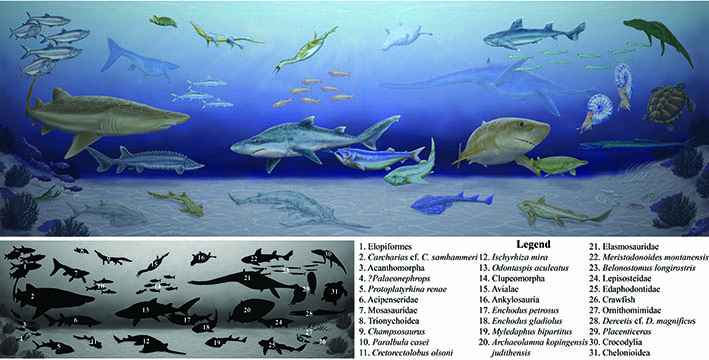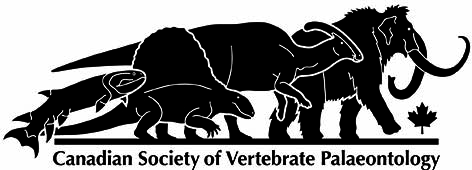A novel, solar panel-based screenwashing apparatus for the bulk collection of microvertebrate fossils in the field
DOI:
https://doi.org/10.18435/vamp29408Keywords:
microvertebrate, microfossil, screenwashing, solar-powerAbstract
The contribution of microvertebrate fossils towards various paleobiological and geochemical studies are becoming increasingly more numerous and significant. As such, several methods have been developed for the extraction and collection of microfossils from bulk sediment. In the field, screenwashing relies on a sieve in a fluvial setting to passively wet sieve the fossiliferous sediment. Sampling in the field can be much easier as it alleviates the need to transport a large quantity of bulk sediment back to the home institution. However, the primary concerns of sampling bulk matrix in the field are access to a fluvial amenity and availability of sediment that can be successfully wet sieved. We encountered both issues at a locality where: 1) there was no access to any sort of fluvial feature, and 2) even with a man-made water containing feature, the clay-rich sediment at this locality created an impermeable layer in each screen box that clogged the screen, and prevented wet sieving. To overcome these challenges, we designed and implemented a two-part apparatus onsite in the field that relied on a solar-powered water transfer pump to cycle water throughout a system to provide fluvial agitation; whereby preventing the buildup of an impermeable clay layer, and allowing the processing and collection of microvertebrate material from this locality in the field. While there are numerous protocols and methodologies for the processing of microvertebrate material, the methodology we document in this study highlights another technique that can be utilized, and will hopefully prove useful to others encountering similar difficulties.
Downloads
References
Avrahami, H. M., T. A. Gates, A. B. Heckert, P. J. Makovicky, and L. E. Zanno. 2018. A new microvertebrate assemblage from the Mussentuchit Member, Cedar Mountain Formation: insights into the paleobiodiversity and paleobiogeography of early Late Cretaceous ecosystems in western North America. PeerJ 6:e5883.
Cullen, T. M., and B. L. Cousens. 2023. New Biogeochemical Insights into Mesozoic Terrestrial Paleoecology and Evidence for Omnivory in Troodontid Dinosaurs. GSA Bulletin 136 (7-8), 2689-2701. https://doi.org/10.1130/B37077.1
Haiar, B. 2022. Examination of Nontraditional Materials for Microvertebrate Fossil Screenwashing. Acta Palaeontologica Polonica, 67(1), 21–25.
Hibbard, C. W. 1949. Techniques of Collecting Microvertebrate Fossils. Contributions from the Museum of Paleontology, 8(2), 7–19.
Hunt, A. P., and S. G. Lucas. 1993. Late Triassic Microvertebrate Localities in New Mexico (USA): Implications for Paleoecology. In S. G. Lucas & M. Morales (Eds.), The Nonmarine Triassic (Vol. 3, pp. 187–192). New Mexico Museum of Natural History and Science.
Jamniczky, H. A., D. B. Brinkman, and A. P. Russell. 2003. Vertebrate Microsite Sampling: How Much is Enough? Journal of Vertebrate Paleontology, 23(4), 725–734.
Kilmury, A. A., A. Anderson, D. S. Wijesinghe, A. F. Verstraete, W. Ezeana, A. E. Anderson, and K. S. Brink 2023. Microvertebrate faunal assemblages of the Favel Formation (late Cenomanian-middle Turonian) of Manitoba, Canada. PeerJ, 11:e15493.
Lehman, T., and S. Chatterjee. 2005. Depositional setting and vertebrate biostratigraphy of the Triassic Dockum Group of Texas. Journal of Earth System Science, 114, 325-351.
McGuire, J. L., A. Woodruff, J. Iacono, J. M. Sethna, J. A. Schap, C. M. Redman, and J. A. Meachen. 2023. Evaluating the Taphonomic Consistency of Microvertebrate Assemblages at Natural Trap Cave, Wyoming, USA. Quaternary International, 647–648, 63–70.
McKenna, M. C. 2010. Collecting Small Fossils by Washing and Screening. Curator: The Museum Journal, 5(3), 221–235.
Peterson, J. E., R. P. Scherer, and K. M. Huffman. 2011. Methods of Microvertebrate Sampling and Their Influences on Taphonomic Interpretations. PALAIOS, 26(2), 81–88.
Rogers, R. R., M. T. Carrano, K. A. Curry Rogers, M. Perez, and A. K. Regan. 2016. Isotaphonomy in concept and practice: an exploration of vertebrate microfossil bonebeds in the Upper Cretaceous (Campanian) Judith River Formation, north-central Montana. Paleobiology, 43(2), 248-273.
Rogers, R. R., H. C. Fricke, V. Addona, R. R. Canavan, C. N. Dwyer, C. L. Harwood, A. E. Koenig, R. Murray, J. T. Thole, and J. Williams. 2010. Using Laser Ablation-Inductively Coupled Plasma-Mass Spectrometry (LA-ICP-MS) to Explore Geochemical Taphonomy of Vertebrate Fossils in The Upper Cretaceous Two Medicine and Judith River Formations of Montana. PALAIOS 25(3), 183-195.
Sarr, R., R. V. Hill, X. A. Jenkins, L. Tapanila, and M. A. O'Leary. 2024. A Composite Section of Fossiliferous Late Cretaceous–Early Paleogene Localities in Senegal and Preliminary Description of a New Late Maastrichtian Vertebrate Fossil Assemblage. American Museum Novitates, 4013, 1-31.
Tütken, T. 2014. Isotope compositions (C, O, Sr, Nd) of vertebrate fossils from the Middle Eocene oil shale of Messel, Germany: Implications for their taphonomy and palaeoenvironment. Palaeogeography, Palaeoclimatology, Palaeoecology, 426, 92-109.
Vasile, Ş., and Z. Csiki-Sava. 2010. Comparative Paleoecological Analysis of Some Microvertebrate Fossil Assemblages from the Haţeg Basin, Romania. Oltenia. Studii Şi Comunicări. Ştiinţele Naturii, 26, 315–322.
Vasile, Ş., and Z. Csiki-Sava. 2011. New Maastrichtian Microvertebrates from the Rusca Montană (Romania). Oltenia. Studii Şi Comunicări. Ştiinţele Naturii, 27, 221-230.
Ward, D. J. 1981. A Simple Machine for Bulk Processing of Clays and Silts. Tertiary Research, 3(3), 121–124.
Wilborn, B. K. 2009. The Use of Hydrogen Peroxide (H2O2) in Secondary Processing of Matrix for Vertebrate Microfossil Recovery. Journal of Vertebrate Paleontology, 29(3), 976–978.
Wilson, L. E. 2008. Comparative Taphonomy and Paleoecological Reconstruction of Two Microvertebrate Accumulations from the Late Cretaceous Hell Creek Formation (Maastrichtian), Eastern Montana. PALAIOS, 23(5), 289–297.
Downloads
Published
How to Cite
Issue
Section
License
Copyright (c) 2025 Cary Woodruff, William Hart, Alex Colesmith, Danny Kreider , Gianna Austin, Alexander Bounassi, Hunter Woodruff

This work is licensed under a Creative Commons Attribution 4.0 International License.
Submission of an article to Vertebrate Anatomy Morphology Palaeontology will be taken to mean that the article is an original work and not previously published or under consideration for publication elsewhere.
If the article is accepted for publication, it will be published on-line under Creative Commons Attribution 4.0 International (CC By 4.0) meaning:
Attribution — You must give appropriate credit, provide a link to the license, and indicate if changes were made. You may do so in any reasonable manner, but not in any way that suggests the licensor endorses you or your use.
No additional restrictions — You may not apply legal terms or technological measures that legally restrict others from doing anything the license permits.







